BRIEF
The project aim of the laser cutting was to create a 300 x 300 mm panel that is designed on a repetition of modules to create organic forms that are naturally – in terms of behavior of the packing of circular modules – perforated. The focus was to master the process of developable surfaces to the construction method in order to keep the resulting geometry faithful, to increase efficiency in assembly and minimize arduous labor. The challenge was to find a balance between the relationship of the final organic surface and the flat circular modules while keeping the connections sturdy.
REFFERNCES
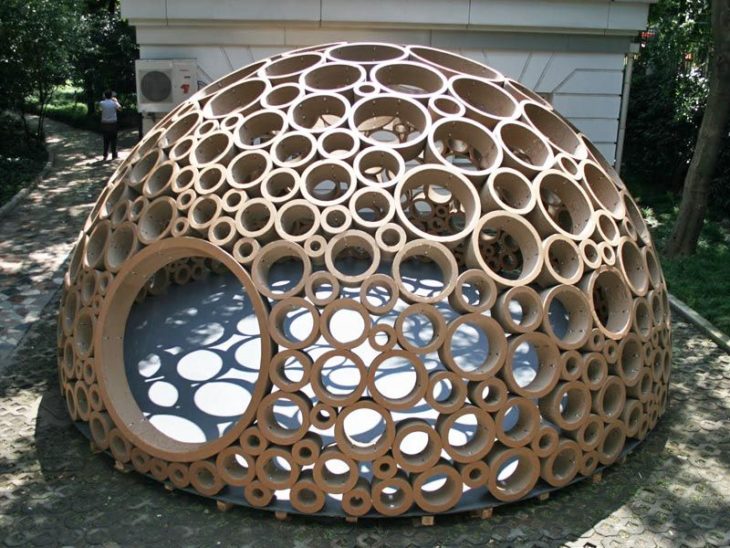
Pavilion Designed by ETH Zurich students Min?Chieh Chen, Dominik Zausinger and Michele Leidi

Archimedean Pavilion designed by Roberto Narváez-Rodríguez
The idea is to achieve an organic form from a series of identical modules connected to one another in order to optimize on site assembly. Instead of having to look for numbered pieces, essentially these modules could be connected at any one of the joints and come together in harmony for the final form.
CONCEPT
We first looked at various ways in which we could form a module which could be repeated to formulate its own form and after a few prototypes we found that for this particular exercise using the circular modules due to their innate nature to form perforations when interlocked together would be most effective. To keep the form open to more than just one possibility we added extra cuts for the modules to be interlocked with each other at various angles. Each module would be a typical module to keep the joinery of the pieces as simple as possible and minimize assembly time.
PROCESS
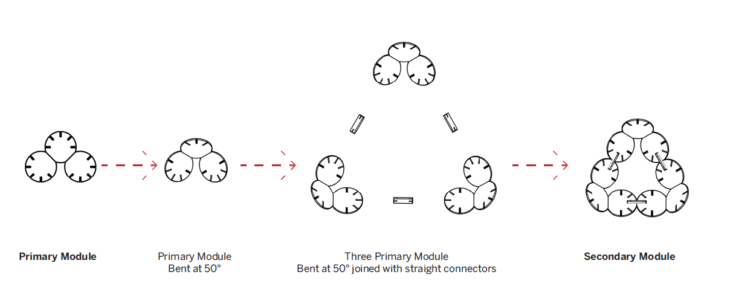
The process that we chose to fabricate the form was interlocking. We picked Polypropylene 1.2mm Black as our material as we would be able to score it and bend it easily due to the natural flexibility of the material. We looked at various ways that we could formulate the module in its ability to form connections and maintain its perforated nature and decided on bending of the material at various angles to create a module that would be replicated and as a result produce a final form based on methods of connections.
PHYSICAL MODEL
CUTTING TIME
Since the Polypropylene presents a 1.2 mm thickness, the cutting speed had to be decreased at 0,5. Therefore this got the cutting time longer, but it also allowed to achieve the final modules in the proper tolerences without uncut pieces. The total cutting time was 2 hours and 10 minutes.
FINAL GEOMETRY
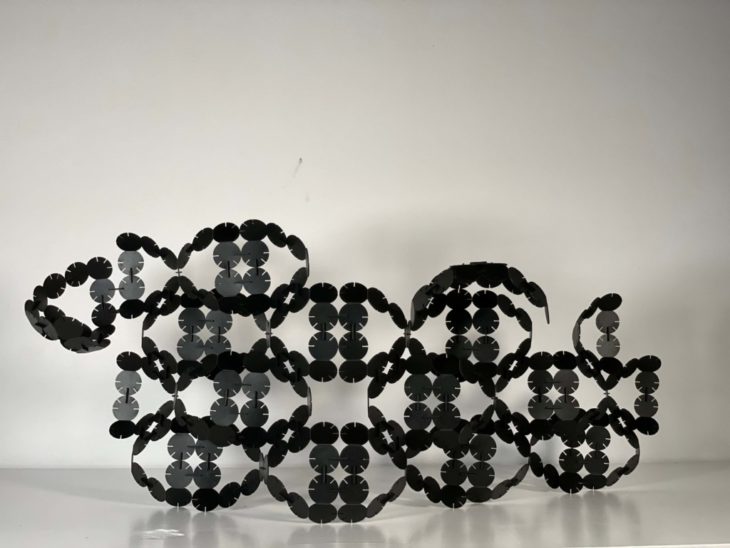
Final Iteration of Modules
The secondary module was then joined together with alternating faces in order to form one of the many geometric possibilities that the module allows.
The pieces came together to form a screen which not only possessed the qualities of a perforated skin but also presented great flexibility in the final form. This aspect gave way to countless more design explorations.
ARCHITECTURAL APPLICATION

Screens for soft partition of various spaces
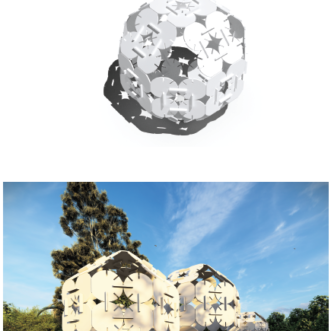
Pods with depth in the 4th dimension with the added play of light
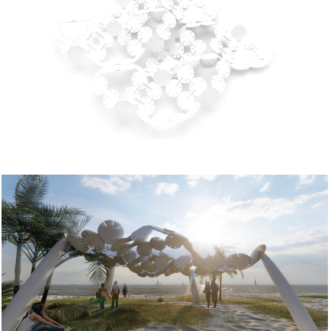
Pavilion structures and installations
This model can be replicated numerous times, in order to get a series of organic forms which can then be used as pavillions or shades in various public spaces such as a garden,
exterior courtyards, parks etc. The shape and the behaviour of the singular modules turn the space into a flexible area, alternating covered and opened spots.
Digital Fabrication II // Plug-In is a project of IaaC, Institute for Advanced Architecture of Catalonia developed at the Master in Advanced Architecture in 2021/2022 by:
Students: Michael Groth, Perniyal Waseem, Stanislas Naudeau, Vaibhav Krishnachandra Toshniwal | Faculty: Ricardo Mayor | Assistants: Marielena Papandreou